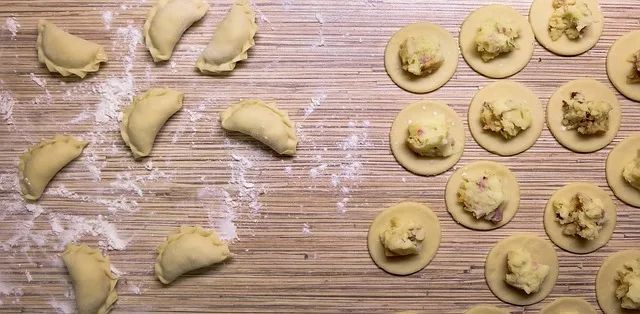First off, gather your materials. You’ll need plywood for the shelves, drawer slides, screws, and a drill. Think of the plywood as the canvas for your masterpiece. Measure the inside of your cabinets to determine the size of your shelves. It’s like tailoring a suit; you want it to fit just right!
Next, cut the plywood to size. If you’re feeling adventurous, you can even add a decorative edge to give it that polished look. Now, let’s talk about the drawer slides. These are the unsung heroes of your pull-out shelves. They allow your shelves to glide in and out smoothly, like a well-oiled machine. Attach the slides to the sides of the cabinet first, ensuring they’re level. This step is crucial—nobody wants a shelf that plays hide and seek!
Once the slides are in place, it’s time to attach the shelves. Slide them into the tracks and give them a test run. Does it glide effortlessly? If so, you’re on the right track! If not, a little adjustment might be needed.
Finally, consider adding a handle to your shelves. It’s like putting the cherry on top of a sundae. Not only does it make pulling out the shelves easier, but it also adds a touch of style.
Maximize Your Kitchen Space: A Step-by-Step Guide to Building Pull-Out Shelves
First things first, measure your cabinet space. Grab a tape measure and jot down the dimensions of your cabinets. This step is crucial because you want your pull-out shelves to fit snugly without any awkward gaps. Next, head to your local hardware store or browse online for the materials you’ll need. You’ll want sturdy plywood for the shelves, some smooth glides for easy access, and a few screws to hold everything together.
Now, let’s get to the fun part—building! Start by cutting the plywood to your desired shelf size. If you’re feeling adventurous, you can even add a decorative edge to give it a polished look. Once your shelves are cut, attach the glides to the sides of the cabinet. Think of these glides as the wheels on a rollercoaster, making your shelves glide in and out with ease.

After that, it’s time to install the shelves. Slide them onto the glides and give them a test run. Do they glide smoothly? If so, congratulations! You’ve just transformed your kitchen into a more organized space. Now, you can easily access your pots, pans, and spices without the hassle of digging through a dark abyss. Plus, you’ll impress your friends with your DIY skills! Who knew maximizing your kitchen space could be this satisfying?
DIY Delight: Transform Your Cabinets with Custom Pull-Out Shelves
Imagine opening your cabinet doors and having everything neatly displayed, just like a well-organized closet. Pull-out shelves are like the magic wand of kitchen organization. They slide out effortlessly, giving you easy access to everything tucked away in the back. No more digging through stacks of dishes or losing your favorite spice behind a mountain of jars.
Creating these shelves isn’t as daunting as it sounds. With a few basic tools and materials, you can craft your own custom pull-out shelves that fit perfectly in your cabinets. Think of it as building a cozy little home for your kitchen essentials. You’ll need plywood, drawer slides, and some screws—easy peasy!
Start by measuring your cabinet space. It’s like taking the measurements for a new outfit; you want it to fit just right! Cut the plywood to size, attach the slides, and voilà! You’ve got yourself a pull-out shelf that’s ready to hold everything from baking sheets to canned goods.
From Cluttered to Organized: How to Create Functional Pull-Out Shelves in Your Kitchen
First off, think about your space. Do you have deep cabinets that seem to swallow your pots and pans? Pull-out shelves are perfect for those tricky spots. They slide out smoothly, giving you easy access to everything without the need to play a game of Tetris every time you cook. It’s like having a personal assistant that brings your kitchen essentials to you!
Next, consider the materials. You want something sturdy, right? Opt for high-quality wood or metal that can handle the weight of your kitchen gear. It’s like building a solid foundation for a house; if the base is strong, everything else will stand tall.
Now, let’s talk about measurements. Measure twice, cut once! You don’t want to end up with shelves that are too big or too small. Take the time to get it right, and you’ll save yourself a headache later. Think of it as tailoring a suit; a perfect fit makes all the difference.
Once you’ve got your shelves in place, it’s time to organize! Use bins or dividers to keep similar items together. It’s like sorting your sock drawer—suddenly, everything has its place, and you can find what you need in a snap.
Unlock the Potential of Your Cabinets: The Ultimate Guide to Pull-Out Shelf Construction
Imagine sliding out a shelf and having all your spices, baking sheets, or even canned goods neatly displayed right in front of you. It’s like having a personal assistant that organizes your kitchen! Pull-out shelves are not just a luxury; they’re a game-changer for maximizing space. You can build them yourself with just a few tools and materials, making it a fun DIY project that adds value to your home.
So, how do you get started? First, measure your cabinet’s interior dimensions. This step is crucial because you want your shelves to fit snugly without any awkward gaps. Next, choose the right materials—plywood is a popular choice for its durability and ease of use. Cut the wood to size, and don’t forget to sand the edges for a smooth finish.
Crafting Convenience: Build Your Own Pull-Out Shelves for a Seamless Kitchen Experience
Building pull-out shelves is not just about convenience; it’s about transforming your cooking space into a well-oiled machine. Think of it as creating a personalized drawer system that fits your unique needs. You can customize the size, depth, and even the materials to match your kitchen’s vibe. Plus, it’s a fun DIY project that can be tackled over a weekend!
So, how do you get started? First, measure the space in your cabinets. You wouldn’t want to build a shelf that’s too big or too small, right? Next, gather your materials—plywood, drawer slides, and some screws. It’s like assembling a puzzle, and trust me, the satisfaction you’ll feel when it all comes together is unbeatable.
Now, let’s talk about the installation. It’s as simple as pie! Attach the drawer slides to the sides of your cabinet and the shelves. Once you’ve got everything in place, you’ll be amazed at how smoothly they glide in and out. It’s like having a secret compartment in your kitchen that only you know about!
The Art of Organization: Designing and Building Pull-Out Shelves for Every Kitchen
First off, think about your space. Every kitchen is unique, much like a fingerprint. Measure your cabinets and visualize how pull-out shelves can fit in. It’s like playing Tetris—finding the right pieces to create a seamless flow. You want to maximize every inch, so consider the height and depth of your shelves.

Next, let’s talk materials. You wouldn’t build a house with flimsy wood, right? The same goes for your shelves. Opt for sturdy plywood or solid wood that can handle the weight of your pots, pans, and all those spices you’ve collected over the years. It’s like choosing the right foundation for a skyscraper; you want it to stand tall and strong.
Now, onto the fun part: the design! Picture this: shelves that glide out effortlessly, revealing everything at a glance. You can use soft-close slides for that luxurious feel, or even add dividers to keep your items organized. It’s like having a personal assistant in your kitchen, always ready to help you find what you need.
Frequently Asked Questions
What Tools Are Required to Build Pull-Out Shelves?
To build pull-out shelves, you will need a few essential tools: a measuring tape for accurate dimensions, a saw for cutting wood, a drill for making holes and driving screws, a screwdriver for assembly, and a level to ensure proper alignment. Additionally, having clamps can help hold pieces together while you work, and sandpaper will smooth edges for a finished look.
What Materials Do I Need for Pull-Out Shelves?
To create pull-out shelves, you will need plywood or MDF for the shelf material, drawer slides for smooth operation, screws for assembly, and a measuring tape for accurate dimensions. Additionally, consider using wood glue for added strength and a finish or paint to enhance appearance.
What Are the Best Designs for Kitchen Pull-Out Shelves?
When selecting designs for kitchen pull-out shelves, consider factors such as material durability, ease of installation, and accessibility. Opt for sturdy materials like plywood or metal for longevity. Adjustable shelves can maximize space, while soft-close mechanisms enhance usability. Ensure the design complements your kitchen layout and allows for easy access to items stored at the back.
How Do I Install Pull-Out Shelves in My Cabinets?
To install pull-out shelves in your cabinets, first measure the interior dimensions to ensure a proper fit. Purchase pre-made pull-out shelf kits or materials to build your own. Remove the cabinet doors if necessary for easier access. Install the mounting brackets on the sides of the cabinet, ensuring they are level. Attach the slides to the shelves and then secure them to the brackets. Finally, test the shelves for smooth operation and make any adjustments as needed.
How Do I Measure for Pull-Out Shelves?
To measure for pull-out shelves, first determine the width and depth of the cabinet where the shelves will be installed. Measure the interior width at the widest point and the depth from the back of the cabinet to the front edge. Ensure to account for any obstructions like hinges. For height, measure the space between existing shelves or the bottom of the cabinet and the top of the cabinet. Use these measurements to select or custom-build pull-out shelves that fit perfectly.